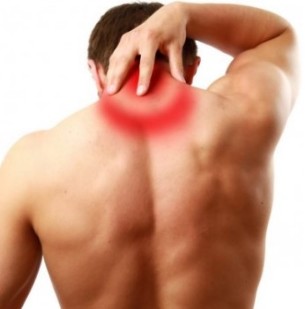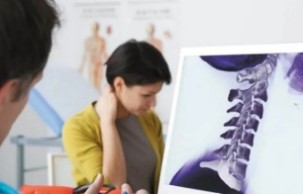The osteochondrosis is a disease of the spine, which is characterized by changes in the cartilage are the intervertebral disks and reagents, the processes in the tissues.
Collar of the osteochondrosis of the spine is different in its manifestations of the thoracic and lumbar osteochondrosis. The symptoms of the degenerative disease of the cervical disc are related to the anatomical features of the cervical spine. The dimensions of the cervical vertebra lower size of other departments. Cervical region, constantly testing the load, keeping the head and is characterized by its great mobility.

The causes of degenerative disc disease
The causes of the development of the disease in the first place, are the age group of aging of the organism and the destruction of the bone and cartilage. Also included are the causes of degenerative disc disease:
- the violation of posture,the
- the decrease of motor activity in the result of the sedentary life-style,
- the excess of weight, that is the result of metabolic disorders, has the burden on the discs of the spine,
- a hereditary factor,
- the prolonged physical effort,
- anomalies of the vertebral column.
Uniforms of the physical activity, good nutrition and a healthy lifestyle visibly reduces the likelihood of developing this disease, as well as the impact on the general well-being.
The symptoms of degenerative disc disease, cervical spine
Manifestations of the degenerative disc disease cervical differ from those of other departments of the spinal column. This is related to the fact that the cervical vertebrae have a different structure and are very close. Therefore, any displacement is manifested with severe pain. In addition, in the cervical region of the spine often zaselyalsya bunch of nerves and arteries.
Collar of the osteochondrosis of the spine is manifested by the following symptoms:
- The sensation of pain – the pain may be felt in different parts of the body. This is due to what happens in the crushing of the nerve endings and the muscles of the corresponding body part.
- The weakness in the upper extremities – is manifested by crushing of the nerve endings responsible for motor activity.
- The complexity in the curves of the head, the occurrence of the crack of the vertebrae in the cervical region – arise due to changes in the structure of the intervertebral of the unit, the appearance of the bones of the entities.
- The low sensitivity of the hands.
- The weakness and dizziness appear due to crushing of the artery, which allows the entry of blood and nutrition on the brain.
- Loss of hearing and sight – appears in the last stage of the disease, when it interrupts the circulation of the blood in the cerebellum.
The signs of the degenerative disc disease cervical
- Radicular syndrome is characterized by pinched nervous of the beam in the region of the neck. It manifests with severe pain, which may feel in the shoulder, the shoulder.
- As the syndrome manifests intense headaches, pain in the temples and the nape of the neck.
- Reflector syndrome is characterized by severe pains in the cervical region, which may increase with any movement of the head. The pain can move into the shoulder and in the chest.
- A cardinal syndrome is reminiscent of the attack of angina pectoris, to determine that it is extremely difficult.
Degree of development of the degenerative disc disease cervical spine
As the development of the disease goes through several stages. Each stage has its own characteristics and is characterized by certain traits.
- 1 phase. Osteo-cartilage fabric of the vertebrae gradually begins to deteriorate. The symptoms of a disease less visible. And very often, patients don't notice, and linked to the tiredness and pain with overwork and stress.
- 2 phase. By the height of the disc begins to decrease the occurrence of cracks. The patient experiences persistent pain, weakness, numbness of the face.
- 3 phase. Begin to develop disc herniations, damaged neck vessels and muscles. The allegations appear in the vertigo, pain in the neck area.
- 4 stage. The bone tissue that protects the vertebrae of the excess charge starts to grow and, in consequence, zaselyalsya the nerve endings. It produces stiffness in the movements, and damage to adjacent joints.
Dangers of degenerative disc disease cervical
In the cervical region there is a large amount of nerves and arteries that provide energy to brain. In the case of the violation of their work, the brain will not receive enough energy for normal operation. This situation may alter the motor activity of the person, causing pain in the extremities, as well as the loss of coordination.
In the stage of execution of the osteochondrosis can develop ischemia, myocardial infarction and many other diseases dangerous to the life of the person.
Therefore, if you encounter any of the symptoms related with this disease, it is recommended to seek medical attention.
The diagnosis of the cervical region of the spine
For the survey of diseases of the spine, we use the following types of diagnosis:
- x – ray- is ineffective way of diagnosing this disease,
- Mri (magnetic resonance imaging)shows the bone structure, which are formed of a herniated disc and its dimensions,
- In ct (computed tomography) scan to be very effective in comparison with magnetic resonance imaging, as well as with the help of this method of diagnosis is difficult to determine the size of the hernia,
- The duplex ultrasound analysis is used when it breaks the total blood circulation. This study shows the existing speed of the blood flow, as well as the presence of obstacles in its path.
The treatment of osteochondrosis of cervical spine

The treatment of the degenerative disc disease cervical spine should be carried out in conjunction depending on the situation. The positive effect can be achieved thanks to the built-in application and an individual approach, which includes access to medicines, ma physio curative procedure in physical education, massage, also used the tools of folk medicine.
In the period of exacerbation of the treatment of the degenerative disc disease cervical spine has the purpose of increasing the circulation of the blood, in the release of muscle spasms. In this case, is assigned to tools that improve the flow of blood, anti-inflammatory and pain medications, vitamins.
Therapeutic exercise to the osteochondrosis of cervical
Gymnastics gives visible results and less dangerous in the recovery phase. The principle of operation of the physical culture medical consists of the restoration of the blood flow in the damaged areas of the body. Compliance with the exercise of the physical culture medical the patient should not feel pain and discomfort.
Set of exercises for the cervical spine is designed to strengthen the muscles of the neck, and also acts as prevention for the development of the degenerative disc disease cervical.
Massage the osteochondrosis of the cervical spine
The massage is performed with the purpose of strengthening the muscle tone and relieve pain. Depending on the stage of development of the disease, there are different techniques of massage. The classic massage techniques are:
- rubbing – this technique consists in the influence on the superficial layers of the skin. The massage begins with nuchal translucency and continues to the clavicle and the axilla.
- tightening – in this case, the impact on the course of massage occurs in the deeper layers of the skin. Through the neck, the thumb and the index, perform the motion capture of the skin that resemble the squeezing.
- Swedish – made with the purpose of warming up and relaxation of the skin, to improve the blood supply in the neck the cervical area.
- kneading – has specific restrictions, as it profoundly affects the underlying fabric. If not done properly this can do damage to the patient.
In cases in which the patient has the sensation of pain occurs only on one side, the massage should start to meet the healthy part of the neck, gradually moving in the part of the neck, where pain appears.
The massage can be performed both at home and at the health facility. However, in the course of its execution, you should be very cautious not to provoke aggravation of the disease or not make it worse.
The prevention of the emergence of the degenerative disc disease cervical
To prevent the occurrence and development of disease, it is recommended to follow the simple rules:
- to lead a healthy life, do exercise, regularly visit the swimming pool.
- diversify the diet of foods rich in magnesium and calcium;
- in the case of sitting at the work table it is necessary several times a day, do warm-up exercises;
- for sleeping, you must choose a layer of extra padding and a comfy pillow.
















